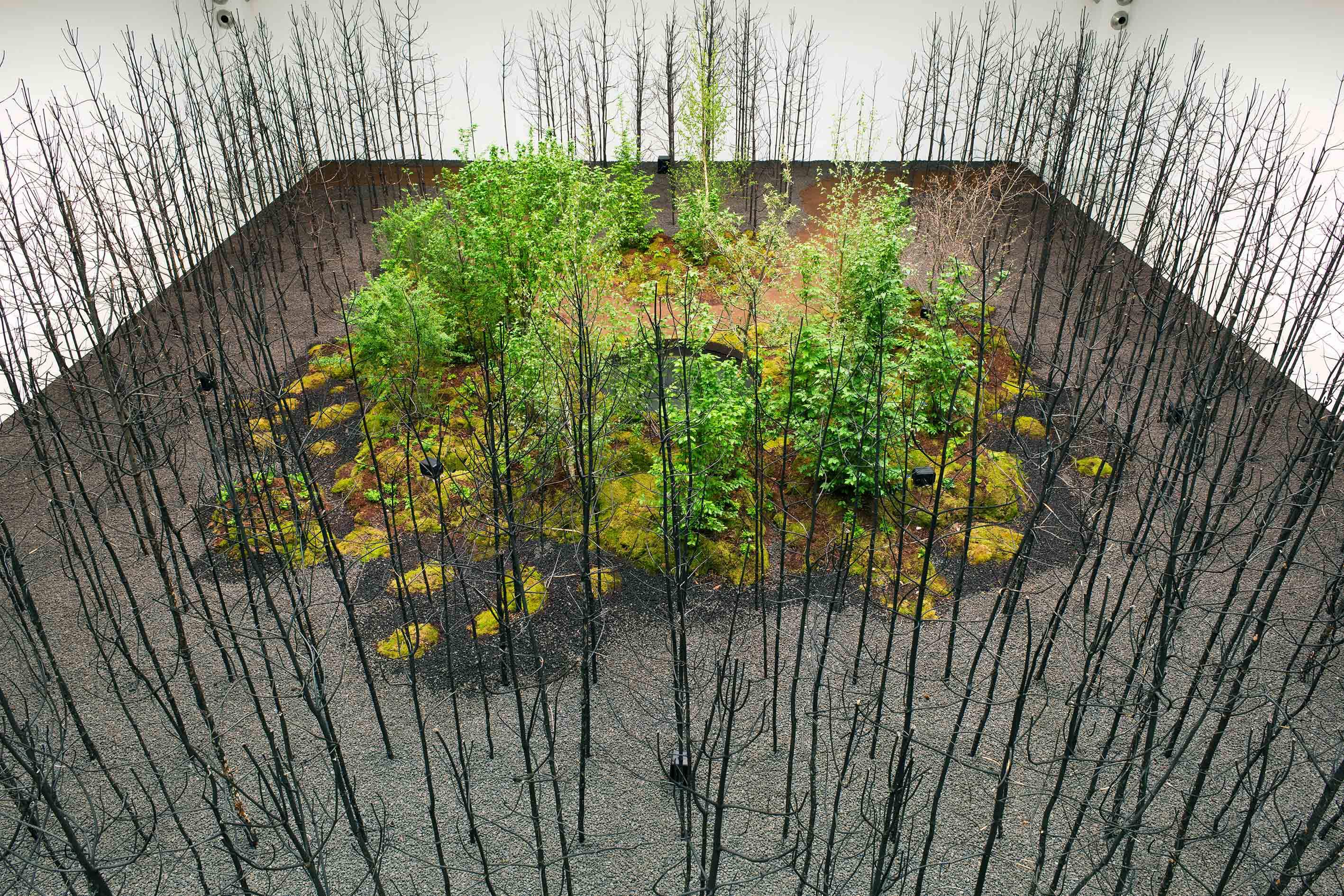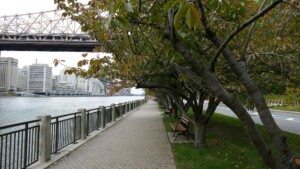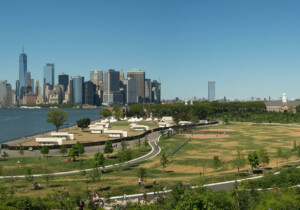About halfway through the 2021 Vienna Biennale for Change, somewhere between a striking indoor forest by Anglo-Indian design-research firm Superflux and a cartoon film about political optimism by illustrator Molly Crabapple and featuring the voices of Gael García Bernal and Emma Thompson, viewers may suddenly stop and ask themselves: What the hell is all this doing in Austria?
Well, might they wonder. The show, open through October 3 and subtitled Planet Love, takes as its particular subject the problem of climate change, tackling the issue from every imaginable angle, including but not limited to abstract sculpture, visionary schemes for urban transformation, imaginary space-travel tourism posters, and at least one portrait of activist Greta Thunberg rendered as a series of blood cells. It is, in other words, a lot to take in, and its presence in Austria makes it all the more confounding, given the country’s overall reputation as a place of considerable charm and character, but with little in the way of hip, politically conscious culture-making.
Yet a certain strident, even hectoring progressivism is fast becoming a favorite national export. The Vienna Biennale opened in June almost simultaneously with the debut, just a few hours’ drive to the south, of the Austria Pavilion at the Venice Architecture Biennale; the installation there riffs on related themes in a similar tone and indeed it appears in a miniature satellite form back in the Vienna show, occupying a downstairs room of the main exhibition space at the Museum für angewandte Kunst (MAK). Considered together, these conjoined initiatives seem to suggest something is very riled up in the state of Österreich.
Upstairs, the agita at the Biennale for Change expresses itself through an incredible density and diversity of climate-related material occupying every inch of available space. Christoph Thun-Hohenstein, the director of the show, commends the exhibition to its audience with a stirring invocation: “May this Biennale be successful in not only turning us into PLANET LOVERS but also into committed CLIMATE CARERS!” The all-caps attitude carries over into much that follows: in Julia Schwarz’s Unseen Edibles, a piece examining lichen as a potential food source, with real-life specimens presented in gourmetish array; in Thomas Romm’s Urban Mining, a proposal for ecological use of former built sites (complete with an exemplary patch of gravel); and in local team Architekturzentrum Wien’s Land for Us All, a fairly conventional exploration of urban land use presented in alluringly trippy, Milton Glaser–style display. The show truly appears to have everything, except perhaps subtlety.

It even has the bite-size version of the Venice show, compressing the pavilion-scale edition into a small annex space but conveying more or less the same idea. In both locales, curators Peter Mörtenböck and Helge Mooshammer take a searing look at what they refer to as Platform Austria, using video, supersize wall text, and infographics to illustrate how online media have succeeded in privatizing—in the name of the “frictionless,” consumer-friendly urban experience—so much of city life, heedless of the costs to the environment or social equity. The Vienna iteration conveys most of its critique in two serried rows of video monitors, though it hardly seems less bombastic than its southern counterpart, with its cheeky banners dangling from the pavilion skylight declaring, “Access Is the New Capital” and “The Platform Is My Boyfriend.” In a Venice Biennale marked by pervasive, ho-hum earnestness, Mörtenböck and Mooshammer’s installation stands out for its spiky oppositionalism.
So what has gotten under the Austrians’ skin? In the accompanying catalog for the Biennale for Change, a forward from the country’s secretary of state for arts and culture hails the government’s Ecolabel project—an environmental certification rating that MAK itself was recently awarded—as part of a “European showpiece project” being guided by the state. Perhaps the Venice and Vienna shows are part of the same drive: Austria—and with its grand old capital, long overshadowed by other European cities as a destination for culture—could be setting itself up as a new center for activist-oriented art and design. It’s an unlikely development, but not bad as rebranding efforts go, especially for a city and country (“at the very center of Europe,” as the writer Robert Musil once wrote, “where the world’s old axes crossed”) looking to find a new place in a changing world.
Ian Volner’s most recent book is Philip Johnson: A Visual Biography (Phaidon, 2020).











